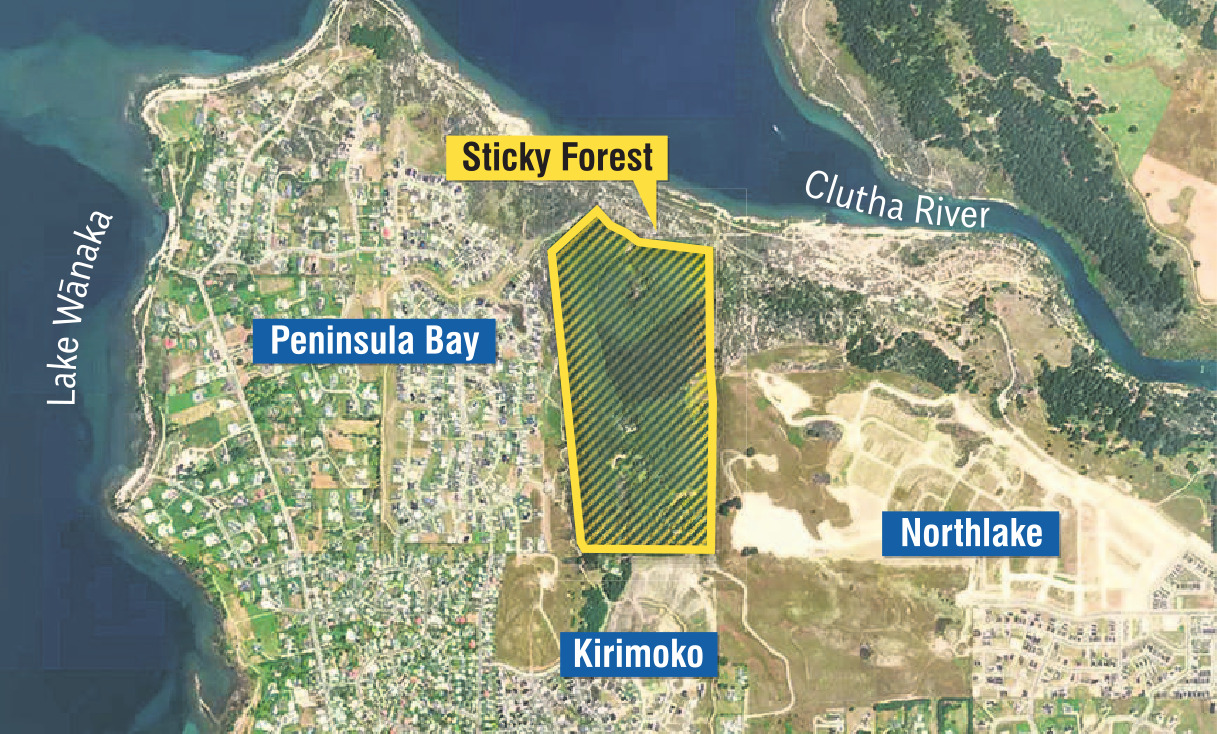
Its origins can be traced back to the 1870s, when Kāi Tahu leader and politician H.K. Taiaroa told the New Zealand House of Representatives the Crown had not honoured its promises and conditions of significant land purchases in the South Island.
One thing slowly led to another — as outlined in a plethora of reports to successive governments and more lately to the Waitangi Tribunal — before redress finally came in 1998 in the form of the Ngāi Tahu Claims Settlement Act.
By that time, Wānaka mountainbikers were already building trails in the supposedly forgotten block of pine forest that should have passed long ago to 50 named Māori individuals, as stipulated under the South Island Landless Natives Act (SILNA) 1906 (since repealed).
The original 50 were mainly Kati Irakehu, from Banks Peninsula. Never mind they were not actually from local hapu living around Wānaka and Hāwea. This was what Parliament decided back then for those individuals.
In 1895, the 50 were first promised a block of land at Manuhaea, The Neck, between Lakes Wānaka and Hāwea. But because the Manuhaea land had been leased to farmers, the Crown decided to swap it with the block at Lake Wānaka now known as Sticky Forest.
But the transfer of Sticky Forest never happened.
This story was one of many presented to the Waitangi Tribunal during the Ngāi Tahu claim.
It was summarised in writing in 2022 by the late whakapapa/genealogy expert Dr Terry Ryan in the Environment Court case of Bunker and Rouse vs the Queenstown Lakes District Council.
No-one in the Environment Court disputed ownership. They were debating what the successors of the original 50 could do with the land — such as building houses in the outstanding natural landscape, buffer zones, access and forestry.
The judges preferred te ao Māori (Māori world view) landscape evidence over te ao Pākehā evidence and said rezoning would provide for the owners’ economic benefit.
Appellant Lorraine Rouse has survived her co-appellants and cousins Theo Bunker and Mike Beresford, who both died recently.
"It is a little sad but they would be very happy, and so are their families, for the results," she said.
"That is a good outcome, part of the process. And as you know, it has been a very, very slow burn. Over the time time, many people have come and gone... Reading through all the submissions and evidence, they all called it a cruel hoax. It does feel like that. We took one step forward and 10 steps backward," Ms Rouse said.
But the Sticky Forest story still has many chapters to go and who knows how the story will end.
Ms Rouse is the chairwoman of a five-member representative group but cannot say what the 2000-plus successors might aspire to do next.
"I don’t have all the answers, purely based on the fact that we are really just at the beginning from a successors’ perspective. ... There [are] 2000 and climbing successors. The number is changing exponentially."
"The key for us as successors, is that any successors who are out there need to ensure their contact details are updated with the Māori Land Court. That is the only means of communication we have. If the Māori Land Court’s contact details are incorrect, it is very hard. Part of this slow burn has been identifying everyone," Ms Rouse said.
Spreading the word far and wide was also important for any person who thought they might be descended from the intended owners of other SILNA land that had not been transferred in the past, she said.

The other three SILNA cases involve blocks on Stewart Island and near the Heaphy Track on the West Coast.
Those situations also suggest a long and sad history for successors of Māori people allocated "wastelands" as "redress" for the loss of economic benefit first complained about by Mr Taiaroa.
A North & South magazine article by George Driver in January this year reported the other three SILNA blocks were assigned to Māori people who lived in Marlborough.
Ms Rouse agreed past decisions were "really weird".
"My ancestors were not involved in any land down in that area of the South Island [Manuhaea and Wānaka] but that was the land available at the time and the Crown allocated it that way. There is no deviation from Sticky Forest, because it has been substituted already from The Neck. This is it," she said.
Environment Court Judge John Hassan reinforced that fact in his decision.
"The appellants are not members of the Papatipu Rūnaka, who hold mana whenua over the part of the district within which the site falls. However, that does not preclude them [from making their case]. The appellants and their fellow successors are Kāti Irakehu, Kāi Tahu [and] the site is ancestral land because of its location within the takiwā of Kāi Tahu [and] because of its specific whakapapa as the the final resting place for long-standing grievances inherited by the appellants and their successors from their ancestors," he said.
He added, quoting the Ngāi Tahu deed of settlement: "the purpose of the Hāwea/Wānaka Sticky Forest block allocation is to provide for the economic wellbeing of the successors".
Any interpretation that the land was not ancestral would be "akin to enshrining that original severance and adding significant insult to injury", Judge Hassan said.
Ms Rouse said a housing development had not been decided on.
"We have had lots of barriers along the way. I am of the mindset the past is the past and we are where we are right now. Progress has been made, we are taking steps, they are big steps, but it is a slow process because of the fact that myself and the representative group cannot make any decisions. It is all about the successors making the decision.
"All we were doing [as appellants] is basically finding out the best possible options for this piece of land and taking it to the successors and then the successors can vote on it. It doesn’t have anything to do with me personally ... I am just one of many successors."
What the zoning decision does mean is that the forest could acquire a more meaningful value.
At the moment, it has a rateable value of about $7 million ($140,000 per hectare).
Originally, the late Mike Beresford applied to rezone the whole 50ha, but the Queenstown Lakes District Council refused because the block has no legal access.
The appellants compromised during the appeal process and sought just 19ha of rezoning.
"That became a huge mountain to climb. People around there did not want rezoning of that particular piece of land at all because of the community biking and walking. It is a beautiful piece of land, no doubt about it, absolutely, but it had been made available to the community via the Crown.
"That will change because it will become privately owned land once it has transferred. That is the really big thing because in some ways some people cannot get their head around that." Ms Rouse said.
Options could include keeping the land in individual land, arranging to have it designated it as Māori land, or holding it as a company or trust.












